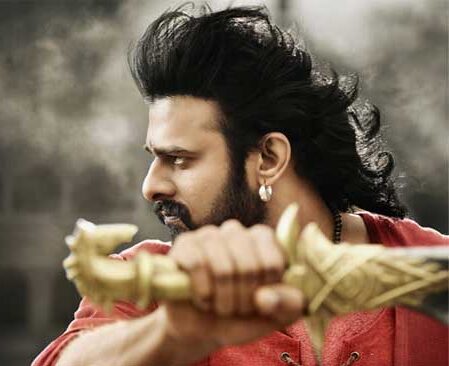It’s been 10 whole years! Ten years back, on July 10, 2015, Indian cinema saw something extraordinary in the form of the release of Baahubali: The Beginning. Helmed by the genius S.S. Rajamouli, this was not just another fantasy set in a historical backdrop. It was a cultural phenomenon that totally redefined what an Indian blockbuster could be by way of sheer magnitude, ambition, and emotional resonance. As Baahubali turns 10 today, fans across the globe are abuzz, reminiscing about the legacy of a film that dreamt impossibly big and in doing so transformed the very landscape of Indian cinema.

A True Cinematic Game-Changer
Prior to Baahubali, it was uncommon for Indian movies—particularly those in regional languages—to capture nationwide interest. But Baahubali broke this ceiling. Through its simultaneous release in Telugu, Tamil, Hindi, and Malayalam, and soon after, its path to international screens, the film seamlessly delineated the boundary between regional and national cinema. For perhaps the first time at all, fans from all of India went to the movies to see a Telugu film, translated into their own language, accepting it not as an alien but as an entertaining tale full of people they actually cared about.
The movie tracked down the amazing odyssey of Shivudu, a young man brought up in a tribal village, who gradually discovers his royal heritage and a secret history of treason, heroic struggles, and great sacrifice. It was a story full of mythology and deep emotion, masterfully incorporating political themes, family obligation, and individual development. It felt like a wonderful epic made real in stunning images.
The Impeccable Rajamouli Stamp
The director S.S. Rajamouli’s vision is largely responsible for Baahubali’s worldwide success. Known for never losing sight of his goals, Rajamouli had a vision of a world in which Hollywood-caliber visual effects and Indian mythology collided. The film’s stunning fantasy city, Mahishmati, was the result of incredible world-building, regal sets, and computer-generated imagery (CGI) that was on par with the best available. From the honorable Amarendra Baahubali to the ferocious Queen Sivagami, the vindictive Bhallaladeva, and the enigmatic Kattappa, every single character was incredibly well-developed with remarkable depth and presence.
One of the bolder choices Rajamouli made was leaving Baahubali: The Beginning on that now-legendary cliffhanger: “Why did Kattappa kill Baahubali?” This query sparked national forums, inspired hundreds of memes, and fueled debate and conjecture for two complete years until the launch of Baahubali: The Conclusion in 2017. The two-part structure provided the epic story with enough space to breathe, so emotional progression can develop and finally detonate in the long-awaited second part.
The Birth of Pan-India Cinema
Baahubali’s huge success wasn’t alone; it actually opened the floodgates to a new generation of Indian cinema—the “Pan-India” movie. It encouraged directors to go beyond linguistic or regional boundaries and target a much larger segment. “Pan-India” soon became the catchword, and before long, we were witnessing the emergence of movies such as KGF, Pushpa, RRR, and Salaar. These films, taking cues from Baahubali, successfully merged regional stories with global sentiments, supported by industry-standard production values and large marketing efforts.
Most importantly, Baahubali made our country fully understand the possibilities of regional cinema to produce global blockbusters. It gave South Indian actors and technicians a long-overdue chance to join the national mainstream. Prabhas, playing the hero, became a household name across India. The performing skills of Anushka Shetty, Tamannaah Bhatia, Sathyaraj, and Rana Daggubati also received universal appreciation in all languages the film was spoken in.
A Legacy That Still Shines Strong
Even a decade on, the Baahubali franchise is still firmly ingrained in Indian popular culture. The film catalyzed an entire universe of spin-offs ranging from action figures to comic books, an animated series, and even stage shows. Netflix itself is in the process of producing a prequel series titled Baahubali: Before the Beginning, further evidence of the franchise’s sustained success.
To commemorate this 10-year anniversary, the makers recently released cryptic clues, hinting at a potential new project in the Baahubali universe. Although there is no official word yet, that mysterious “release tease” has already got fans excited and reminiscing, and it’s clear that the tale and its iconic characters continue to live on in the popular imagination.
More Than Just a Film: It Had Soul
wasn’t merely the enormous scale or huge budget alone that made Baahubali unique; it was its heart and soul. It narrated a deeply Indian tale—one of dharma, duty, pride, and justice—that felt both deeply rooted and fabulously ambitious. It provided Indian cinema with its very own response to The Lord of the Rings or Game of Thrones, and yet remained true to its emotional core.
Conclusion: A Turning Point for Indian Cinema
As Baahubali turns ten, it’s not just a film; it’s an event—a milestone that ushered Indian cinema into a new international landscape. It encouraged a generation of directors to dream big and demonstrated to the world that Indian stories, if explored with imagination and perseverance, have the ability to appeal to people all over the world. Ten years later, its influence still resonates, forcefully shaping the future of Indian cinema.












































